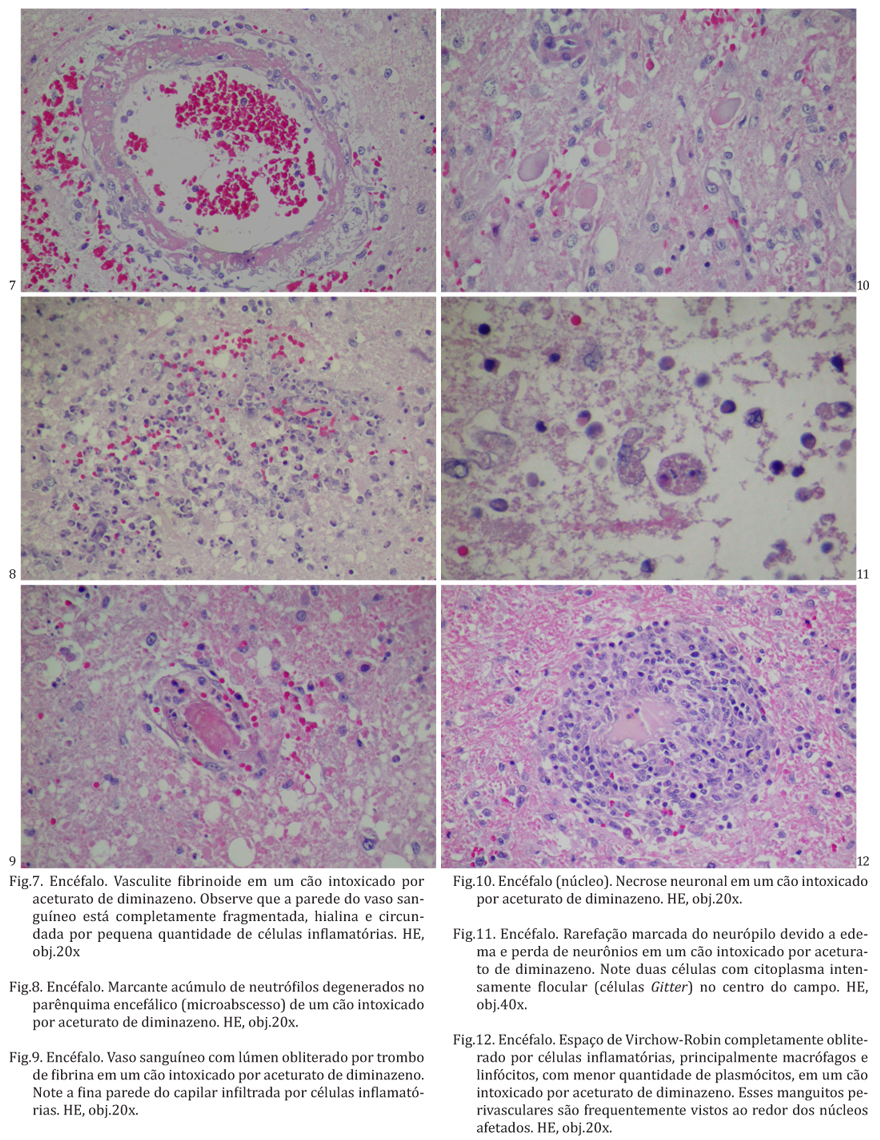The epidemiological, clinical, and pathological aspects of diminazene aceturate (DA) spontaneous toxicosis were evaluated in 10 dogs. All affected dogs developed signs of thalamic-cortical syndrome, characterized mainly by neurological changes in the conscience levels, tetraparesis, extensor stiffness, and seizures. In some cases there was also evidence of cerebellar syndrome, characterized by generalized muscle tremors (high-frequency and low-amplitude) and/or vestibular syndrome, characterized by or ataxia, head tilt, and falling. These clinical signs occurred between 24 and 48 hours following intramuscular administration of DA and persisted until spontaneous death or euthanasia occurred between 1 and 7 days after the onset of clinical signs. The mentioned clinical signs reflected lesions that consisted of focal symmetrical hemorrhagic encephalomalacia affecting medulla oblongata, pons, cerebellar medulla, thalamus, midbrain, cerebellar peduncles, and basal nuclei. This article (1) describes and discusses DA toxicosis in dogs, a poorly-described clinical entity that is unknown by most clinicians and pathologists in Brazil; (2) establishes the clinical and pathological criteria for the diagnosis of DA toxicosis in dogs; and (3) calls up the attention for the risks of using DA in dogs in clinical settings.
Diseases of dogs; toxicosis; toxicology; antiprotozoal therapy; diminazene aceturate


